Houseplants brighten any space and can help support emotional and mental health. However, if you live in an area with less light, some plant species will not be able to survive or will grow more slowly. But that doesn't mean you can't spruce up a low-lit area with greenery!
Keep reading to see our pick of 30 houseplants that will thrive in low light.
Jump to:
- 1. Aluminum Plant
- 2. Arrowhead Plant
- 3. Artillery Plant
- 4. Bamboo
- 5. Broadleaf Lady Palm
- 6. Bromeliads (tropical plant)
- 7. Calathea Zebra Plant
- 8. Cast-Iron Plant
- 9. Chinese Evergreen
- 10. Dracaena
- 11. Dieffenbachia
- 12. English Ivy
- 13. False Aralia
- 14. Fiddle-Leaf Fig
- 15. Fishtail Palm
- 16. Grape Ivy
- 17. Parlor Palm
- 18. Peace Lily
- 19. Peperomia
- 20. Philodendron
- 21. Pothos
- 22. Sago Palm
- 23. Silver Pothos
- 24. Snake Plant
- 25. Spider Plant
- 26. Spiderwort
- 27. Swedish Ivy
- 28. Swiss Cheese Plant
- 29. Weeping Fig Tree
- 30. ZZ Plant
- Final Thoughts
1. Aluminum Plant
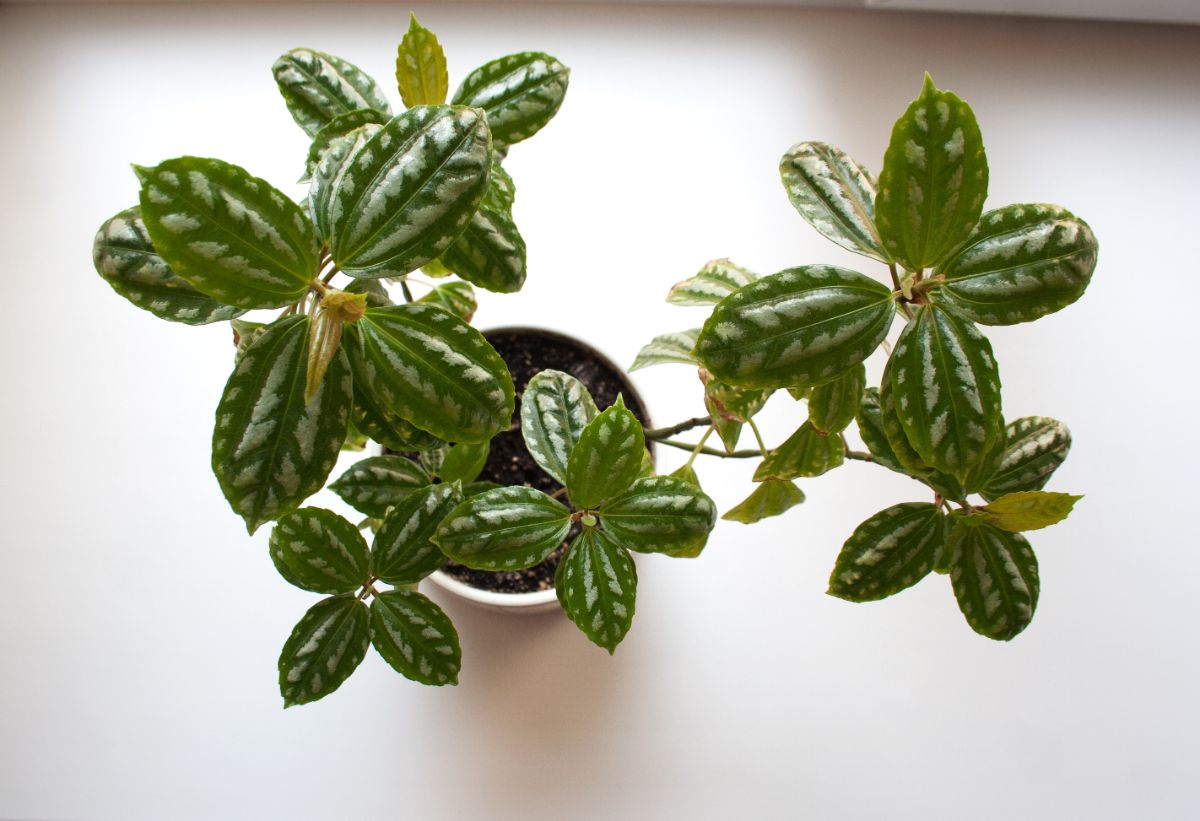
| USDA Hardiness Zone | 9b-11 |
| Light Exposure | Moderate indirect light |
| Water | Evenly moisten soil |
| Size | Up to 12 in. tall |
The aluminum plant grows well in warm climates. Since it thrives in spaces with 70% humidity, mist it occasionally and keep it away from heat sources that may take away from your plant's moisture.
Its lush green foliage makes it a beautiful plant to keep indoors and decorate a tabletop. However, occasionally check the aluminum plant's roots for overabundant growth. The roots can outgrow your pot and break through it, so pot it into a larger container when you first buy it.
2. Arrowhead Plant
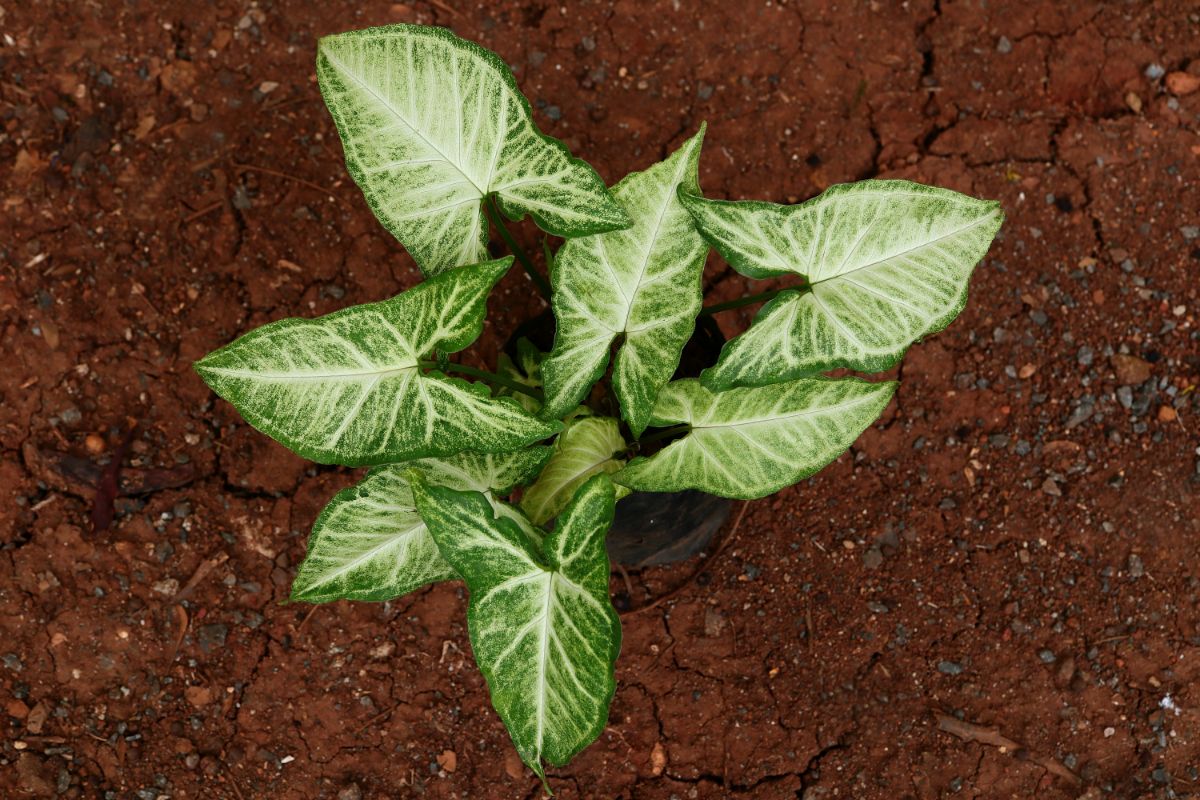
| USDA Hardiness Zone | 10-12 |
| Light Exposure | Moderate indirect light |
| Water | Regular watering |
| Size | 3-6 ft. tall, 1-2 ft. wide |
Native to South America, this popular houseplant brings a lovely aesthetic to any room with its trailing vines. The leaves change shape as it grows, turning from an arrow shape to a divided and deeply lobed mature leaf.
If you want a plant that doesn't require much care, the arrowhead plant is a great choice. It does best when left alone, though the occasional watering and misting will help it thrive. However, do not mist the arrowhead plant if you're growing it in a darker space as it may grow fungus.
3. Artillery Plant
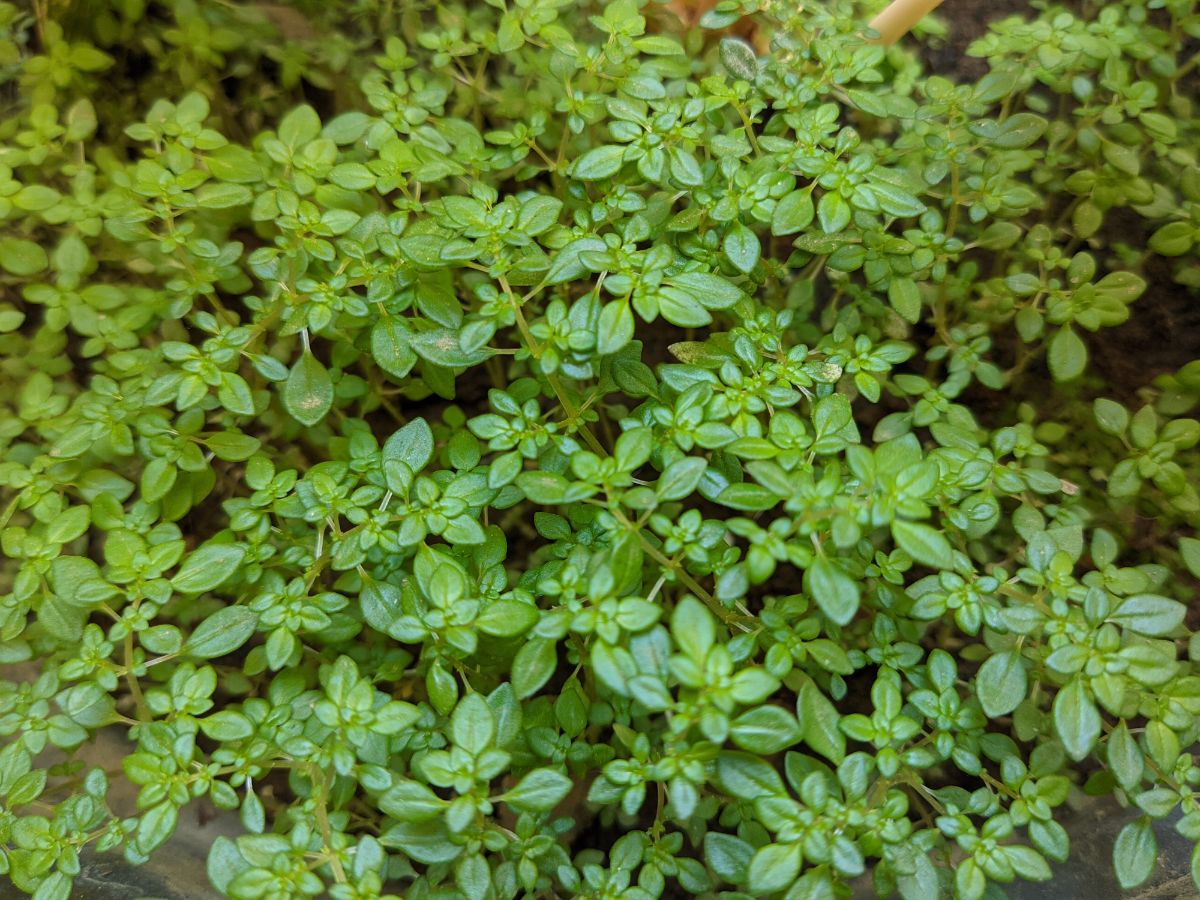
| USDA Hardiness Zone | 11-12 |
| Light Exposure | Moderate to bright indirect light |
| Water | Moderate watering |
| Size | 8-12 in. tall |
This green plant got its name because it shoots out its seeds with a popping sound. However, the artillery plant has a lovely texture and delicate look, similar to a succulent with its plump leaves. It grows easily with minimal care and needs just medium to bright indirect light.
Plant the artillery fern in loose, organically-rich potting soil. It needs to be well-draining and keep moisture to allow nutrients, water, and oxygen to flow through the soil. You can keep the moisture even by watering it only when the soil's surface feels dry.
4. Bamboo
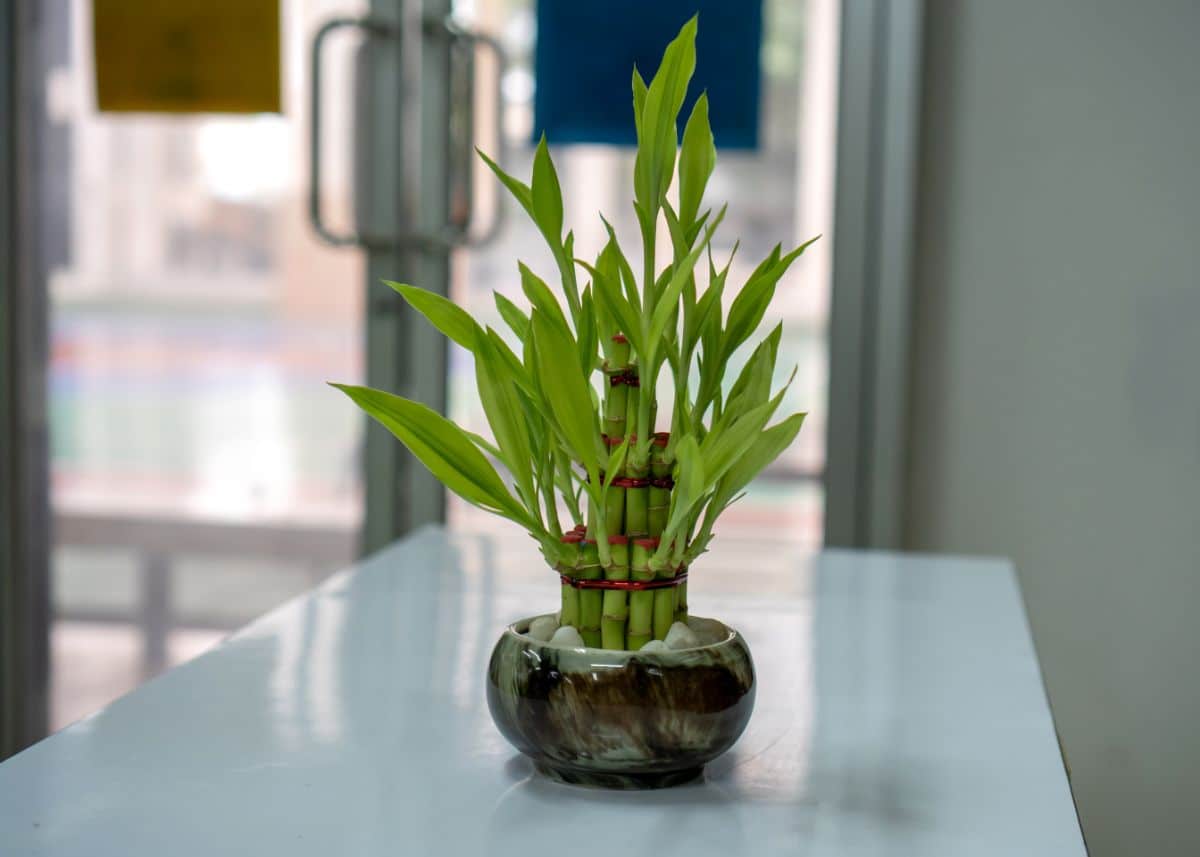
| USDA Hardiness Zone | 10-11 |
| Light Exposure | Partial shade |
| Water | Evenly moistened soil |
| Size | 1-3 ft. tall, 1-2 ft. wide |
Lucky bamboo is an easy plant to grow indoors and comes in many sizes. The name is misleading as this plant is not related to the tall bamboo at all.
Lucky bamboo plants are more like succulents than bamboo and are considered a perennial shrub plant type. They live for a long time and will grow up to about 3 feet tall when grown indoors. They don't require much sun exposure and need moist, well-drained soil.
5. Broadleaf Lady Palm
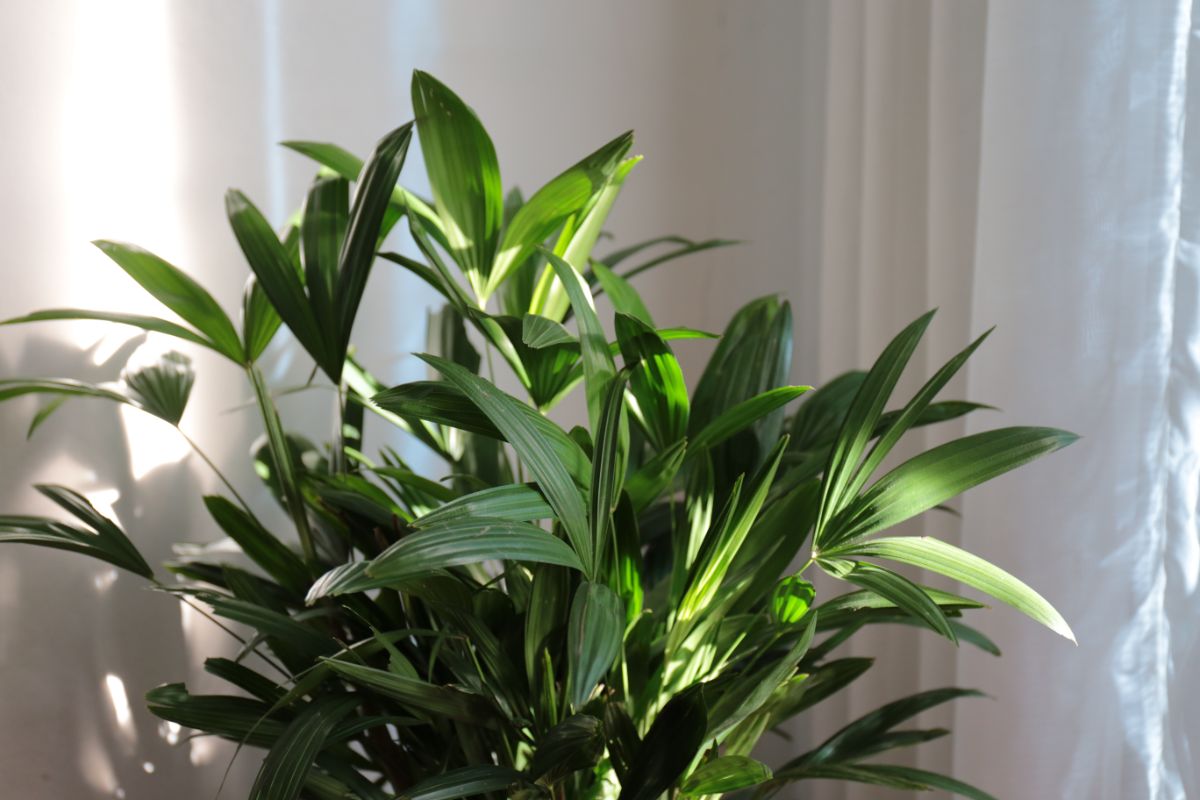
| USDA Hardiness Zone | 10-11 |
| Light Exposure | Partial shade |
| Water | Light watering |
| Size | Up to 14 ft. tall |
The broadleaf lady palm has spiky leaf fronds and a woody stalk. It looks great in interiors with leather furnishings. They rarely bloom when grown indoors, but you might see the occasional tiny white blossom or white ornamental fruits.
When the lady palm grows in the shade, its leaves appear darker. Make sure to thin the plant by removing any dried-out or discolored leaves to keep the plant ventilated. You can also mist the leaves occasionally to keep the fronds clean and dust-free.
6. Bromeliads (tropical plant)

| USDA Hardiness Zone | 10-11 |
| Light Exposure | Bright, indirect light |
| Water | Light watering |
| Size | Between 1 in. to 3 ft. tall |
The bromeliad is a showstopper with its beautiful array of textures and colors. Many varieties of this plant have bright flower displays and leaves that come in various colors and features. They take about three years to mature into flowering plants.
Bromeliad plants require a little more specific growing conditions to bloom. As houseplants, they only need enough water to moisten the soil and can tolerate different levels of light.
7. Calathea Zebra Plant
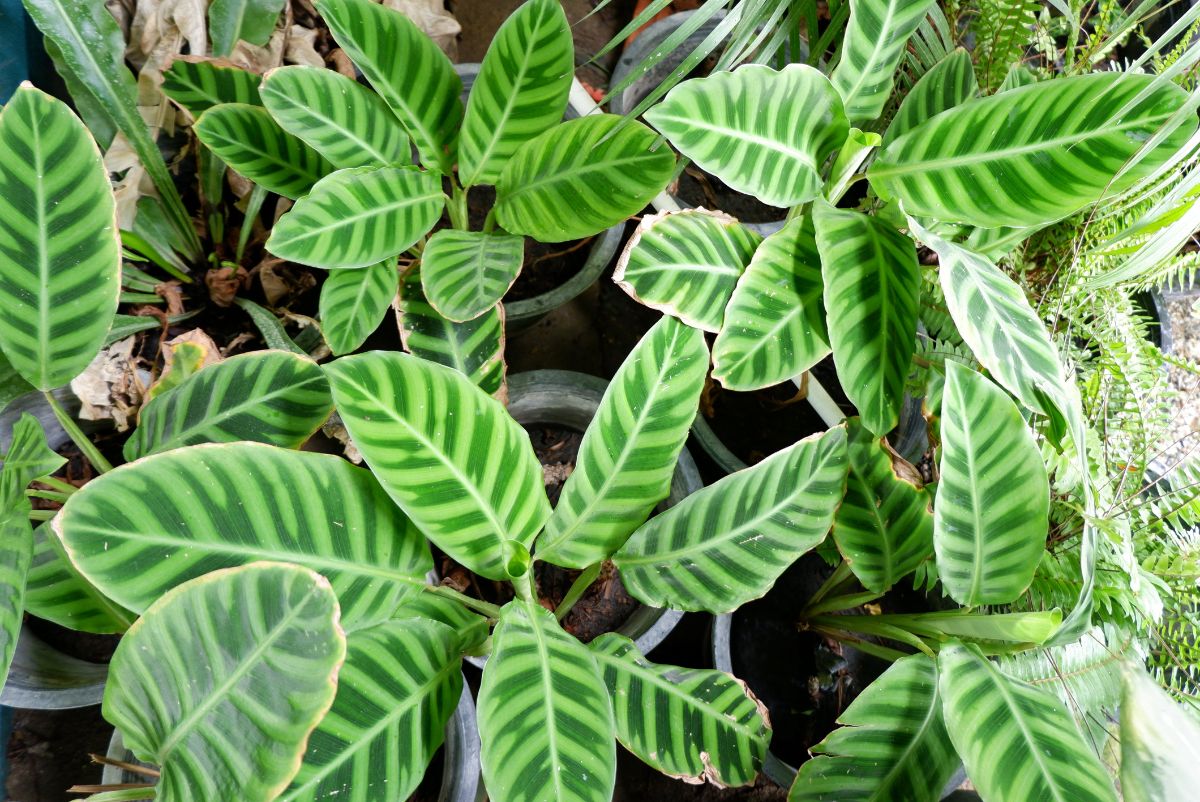
| USDA Hardiness Zone | 11-12 |
| Light Exposure | Filtered indirect light, partial shade |
| Water | Infrequent watering |
| Size | 1-2 ft. tall, 1-5 ft. wide |
The zebra plant earned its name from its bold striped leaves in contrasting shades of green. Its leaves also fold or close at dusk, so it is sometimes called a prayer plant. It needs a humid environment and does well when you occasionally mist its leaves.
The zebra plant needs well-draining soil rich in organic nutrients and can be temperamental. It can grow in bright filtered light or partial shade. To keep the soil moist, water this plant under the leaves every few weeks or touch the earth occasionally to see if it is too dry.
8. Cast-Iron Plant
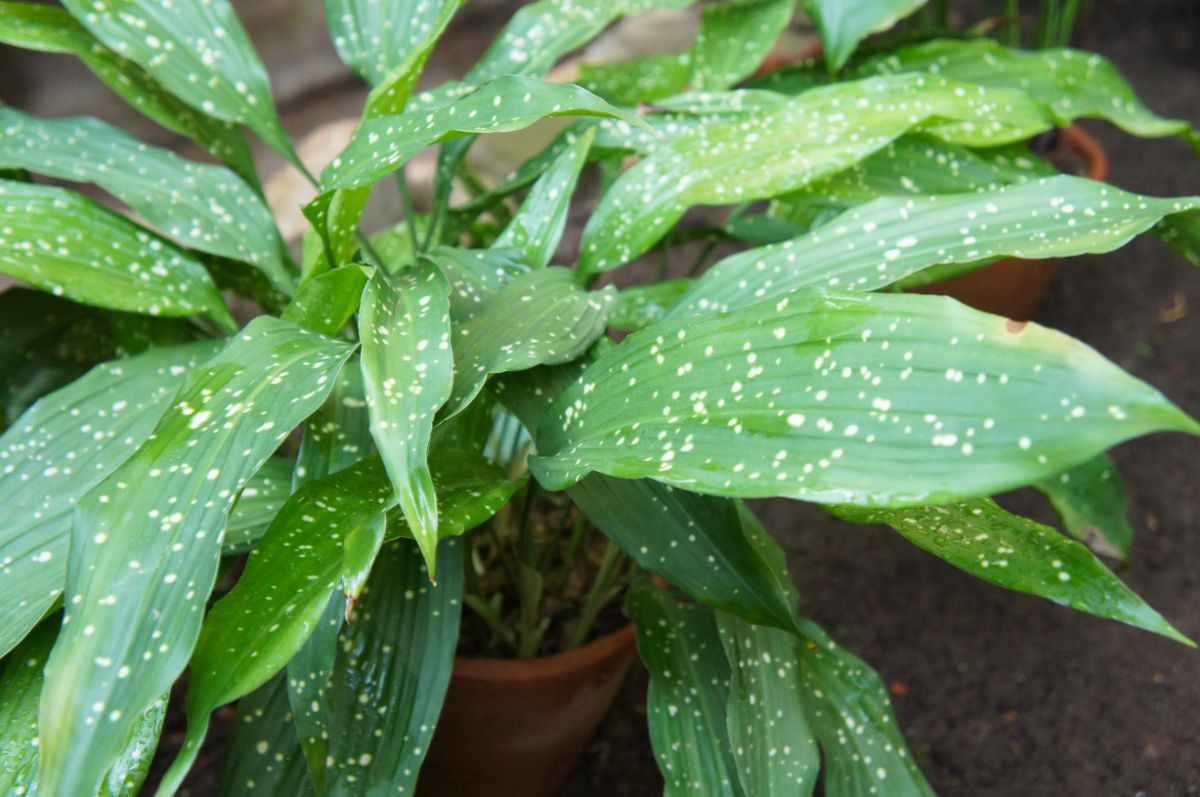
| USDA Hardiness Zone | 8-10 |
| Light Exposure | Partial light, shade |
| Water | Keep soil moist |
| Size | Up to 2-3 ft. tall, 1-2 ft. wide |
If you're not great at taking care of plants, the cast-iron plant is perfect for you. Known as the "hard-to-kill houseplant," the cast-iron can survive even when neglected. It has glossy dark green leaves that can grow up to 2 feet long and 4 inches wide.
All you need to do is water it when the soil feels dry and keep it out of direct sunlight. It thrives in a shady area with indirect sunlight, so you can put it in virtually any part of the house.
9. Chinese Evergreen
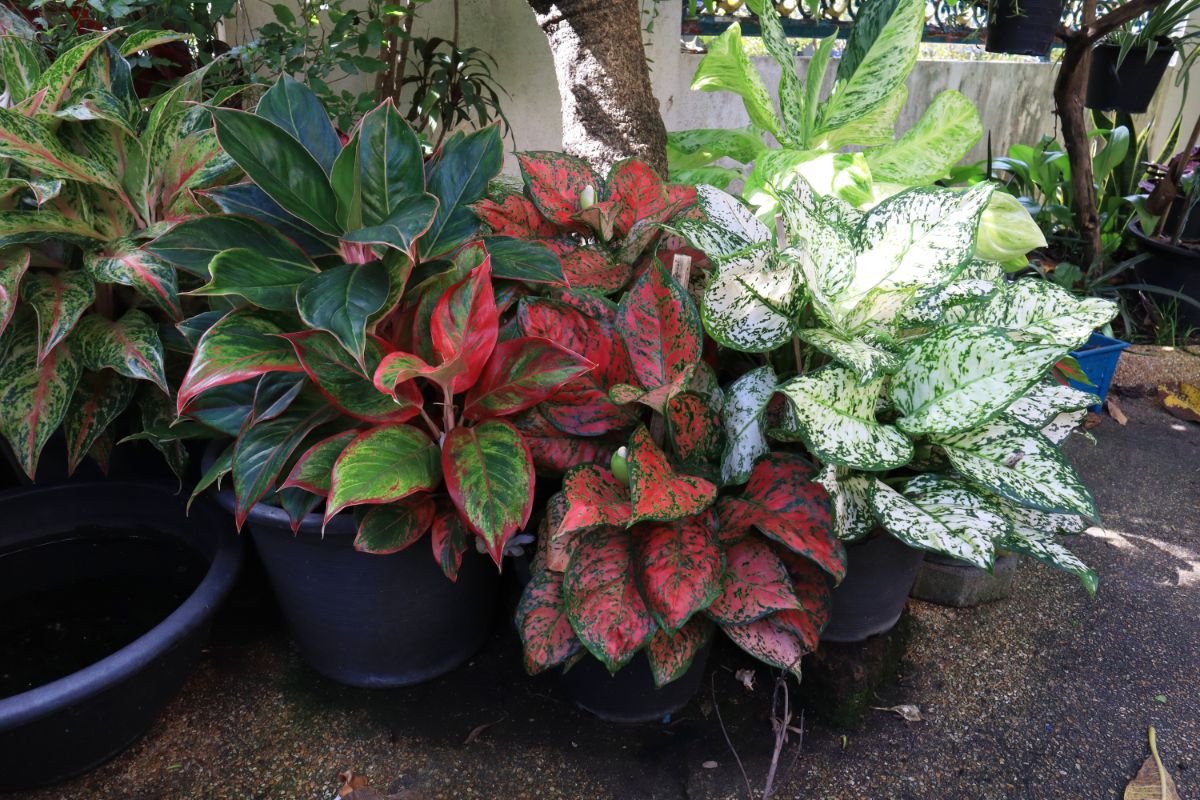
| USDA Hardiness Zone | 10-12 |
| Light Exposure | Partial or full shade |
| Water | Keep soil moist |
| Size | 1-2 ft. tall, 1-2 ft. wide |
Native to Asia, this decorative plant comes in several varieties with large, glossy leaves and short stems. You can find this plant in different colors, such as dark green, silver, and red, to match your home's interior.
The Chinese evergreen doesn't require too much care, but it does need moist soil and adequate light, depending on the variety. If your Chinese evergreen has lighter variegation, it will need more sunlight. Make sure to keep it away from air vents or windows so it can thrive in a warmer and more humid environment.
10. Dracaena
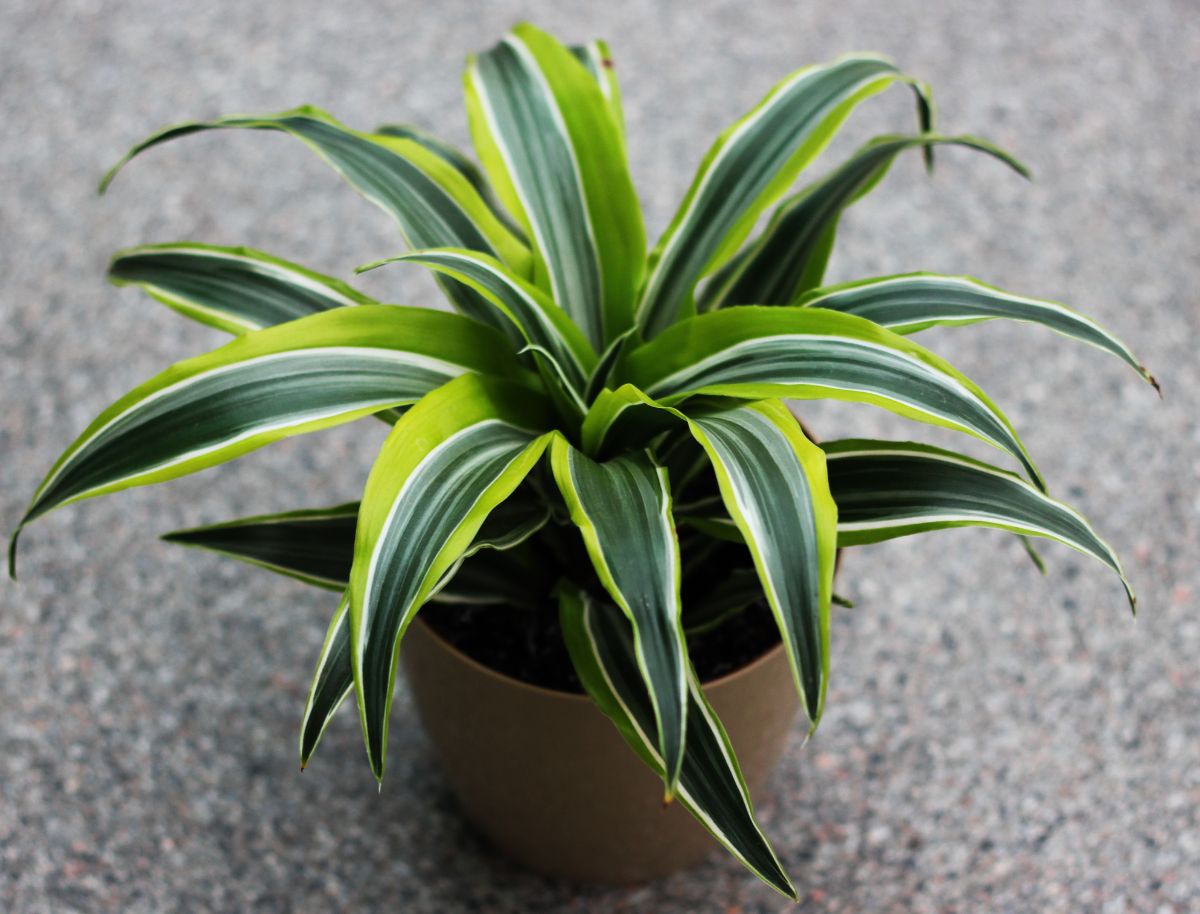
| USDA Hardiness Zone | 10-12 |
| Light Exposure | Partial light |
| Water | Keep soil moist |
| Size | Up to 6 ft. tall in a pot |
Also known as the corn plant, the dracaena has several varieties that come with red, yellow, green, or variegated leaves. They can grow relatively slowly, especially indoors, but they don't require a lot of specific maintenance or care.
The dracaena loves humidity as a tropical plant. If you live in a dry environment, make sure to mist the leaves occasionally. However, avoid overwatering it and make sure the well-draining soil is moist. They do well in bright indoor settings, so you can place them by a window with filtered light.
11. Dieffenbachia
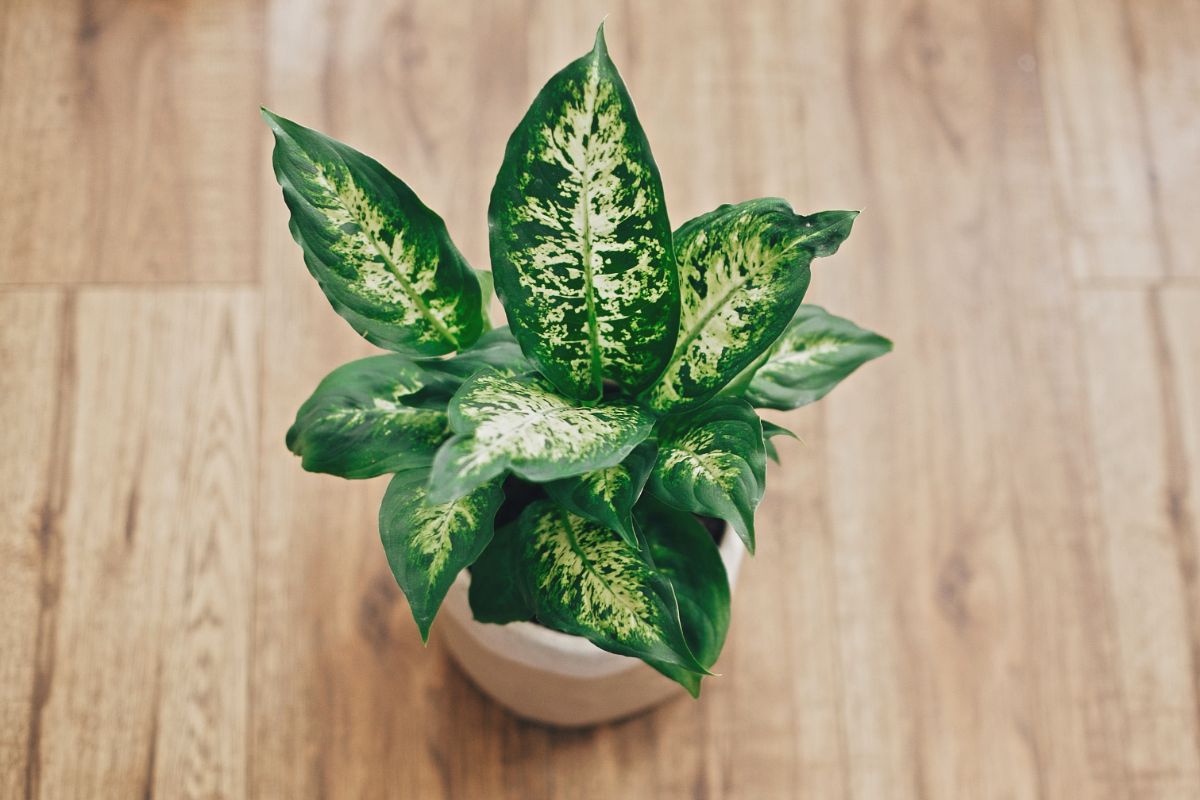
| USDA Hardiness Zone | 10-12 |
| Light Exposure | Bright, indirect light, partial shade |
| Water | Regular watering |
| Size | 3-10 ft. tall, 2-3 ft. wide |
Dieffenbachia is also known as "dumb cane" because of its high toxicity to humans, cats, and dogs. They have pointed oval leaves that come in various white, green, and cream color combinations.
This beautiful tropical perennial does best with bright, indirect sunlight and well-draining potting soil. It also requires high humidity, so make sure to mist the leaves and place them on a tray of wet pebbles to keep them moist without overwatering.
12. English Ivy
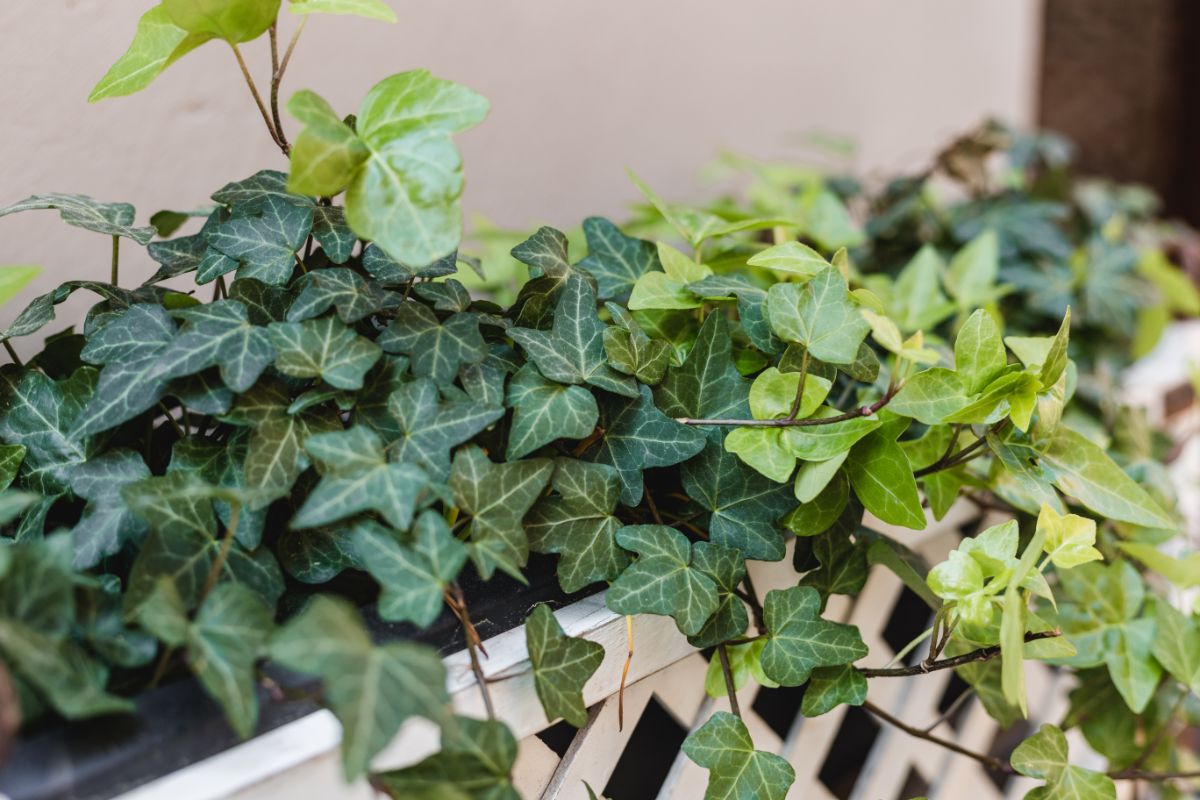
| USDA Hardiness Zone | 4-13 |
| Light Exposure | Partial to full shade |
| Water | Keep slightly dry but moist |
| Size | N/A - climbs and spreads indefinitely |
This fast-growing ivy is also known as "common ivy." English ivy comes in several shades of green and features triangle-shaped leaves with bright veins. It is very easy to grow and care for, and due to its aggressive nature, it is considered an invasive species in several areas.
You will want to start growing English ivy in a large container as it will quickly grow. You can keep it compact by cutting new growth and trailers occasionally. English ivy grows well in partial or full shade and needs well-draining soil.
13. False Aralia
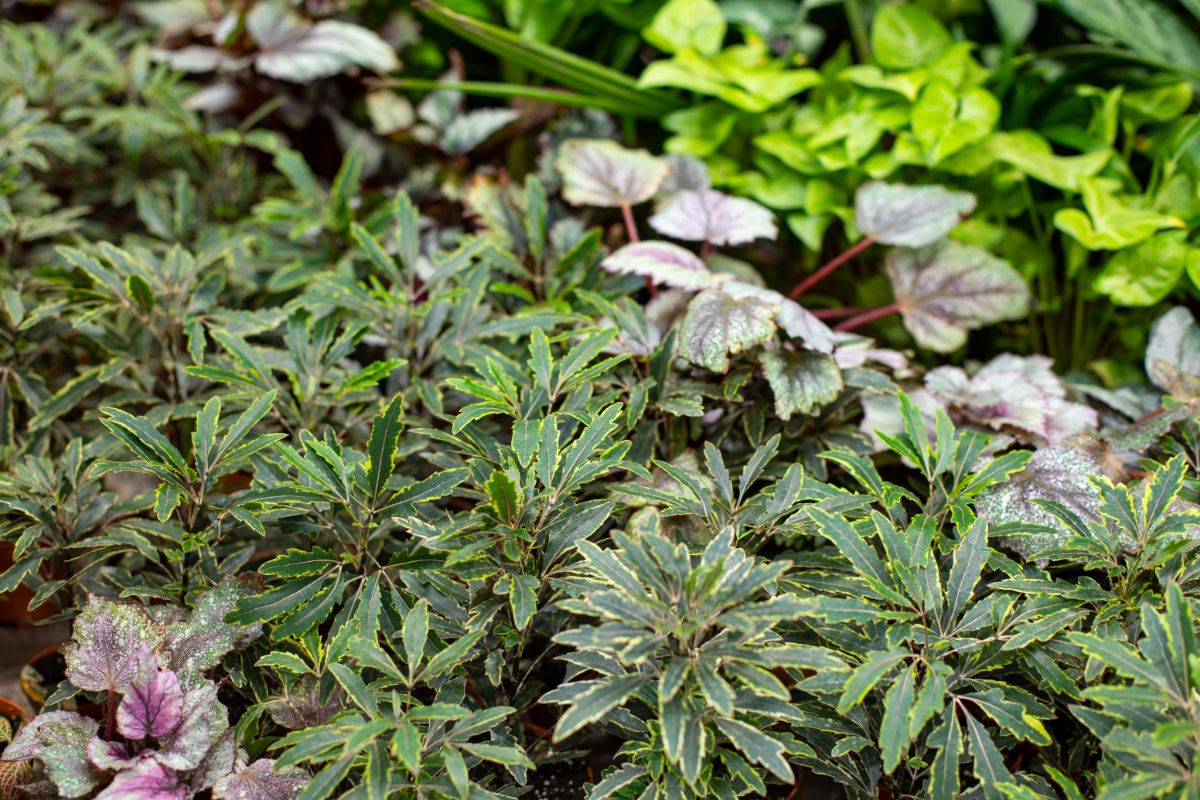
| USDA Hardiness Zone | 10-12 |
| Light Exposure | Bright, indirect light, partial shade |
| Water | Regular watering |
| Size | 4-6 ft. tall, 1-2 ft. wide |
False aralia is a popular houseplant due to its textured foliage and low-maintenance care. These plants do well in moderate humidity and a range of temperatures. Their thin and delicate leaves are deeply serrated and start out looking burgundy or copper and eventually turn into a deeply lobed darker green.
Keep this plant in bright indirect sunlight and keep it adequately moist. It does not like too much water or too little, so make sure to water it only when the first two inches of its soil is dry.
14. Fiddle-Leaf Fig
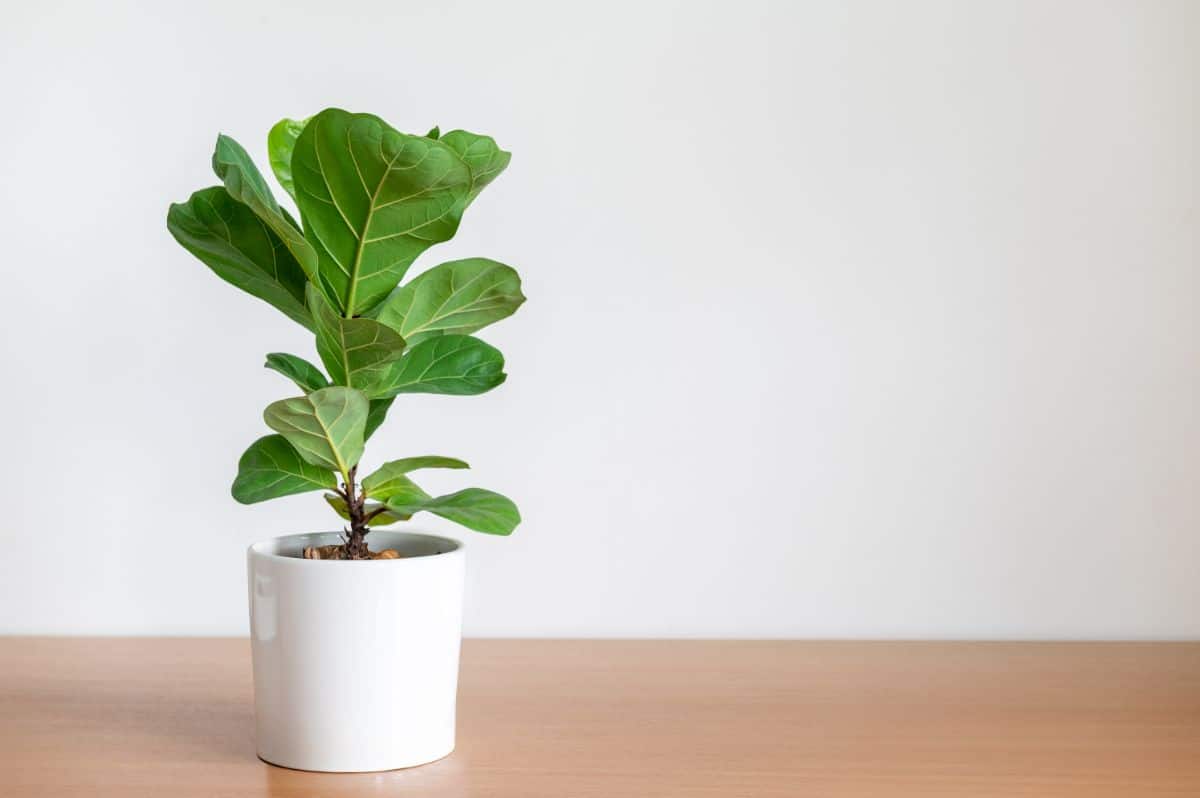
| USDA Hardiness Zone | 10-12 |
| Light Exposure | Partial shade |
| Water | Moderate watering |
| Size | 10 ft. tall |
Native to the tropics of Africa, the fiddle-leaf fig tree thrives in humid and warm environments. The large glossy leaves look like violins and grow upright on a thin trunk.
This plant does well with partial shade and indirect sunlight. Make sure to turn it every few days so it can grow evenly. It can grow up to 10 feet tall indoors. Remember to dust the leaves every week or two to absorb as much light as possible.
15. Fishtail Palm
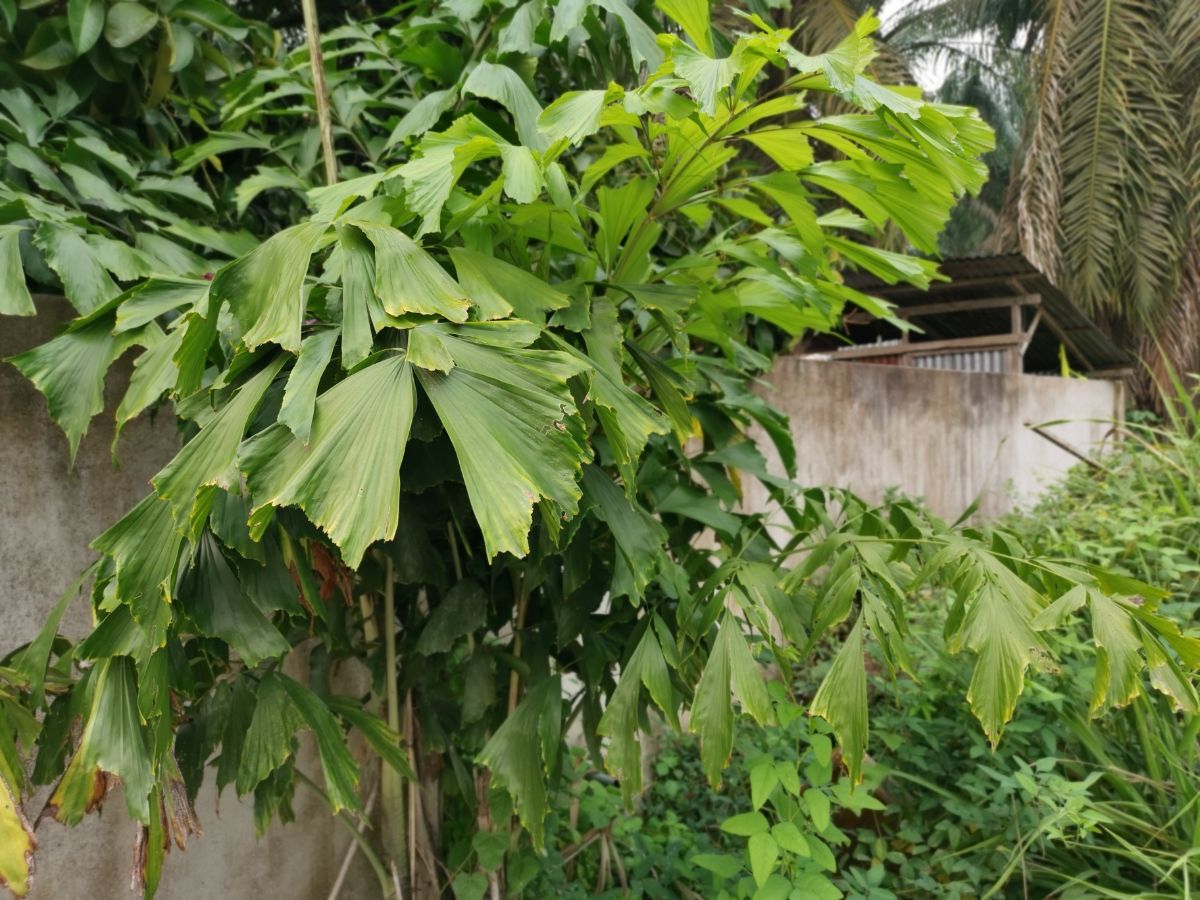
| USDA Hardiness Zone | 10b-11 |
| Light Exposure | Bright, indirect light, partial shade |
| Water | Regular light watering |
| Size | Up to 10 ft. tall |
Fishtail palm is a small tropical tree with foliage that looks like fishtails, hence its name. They are not the easiest to grow indoors for a long time, but their foliage adds a chic accent to larger spaces like foyers.
Make sure to water it regularly and keep its roots moist. However, the fishtail palm requires less water during the colder months but a consistent humid environment and bright indirect light.
16. Grape Ivy
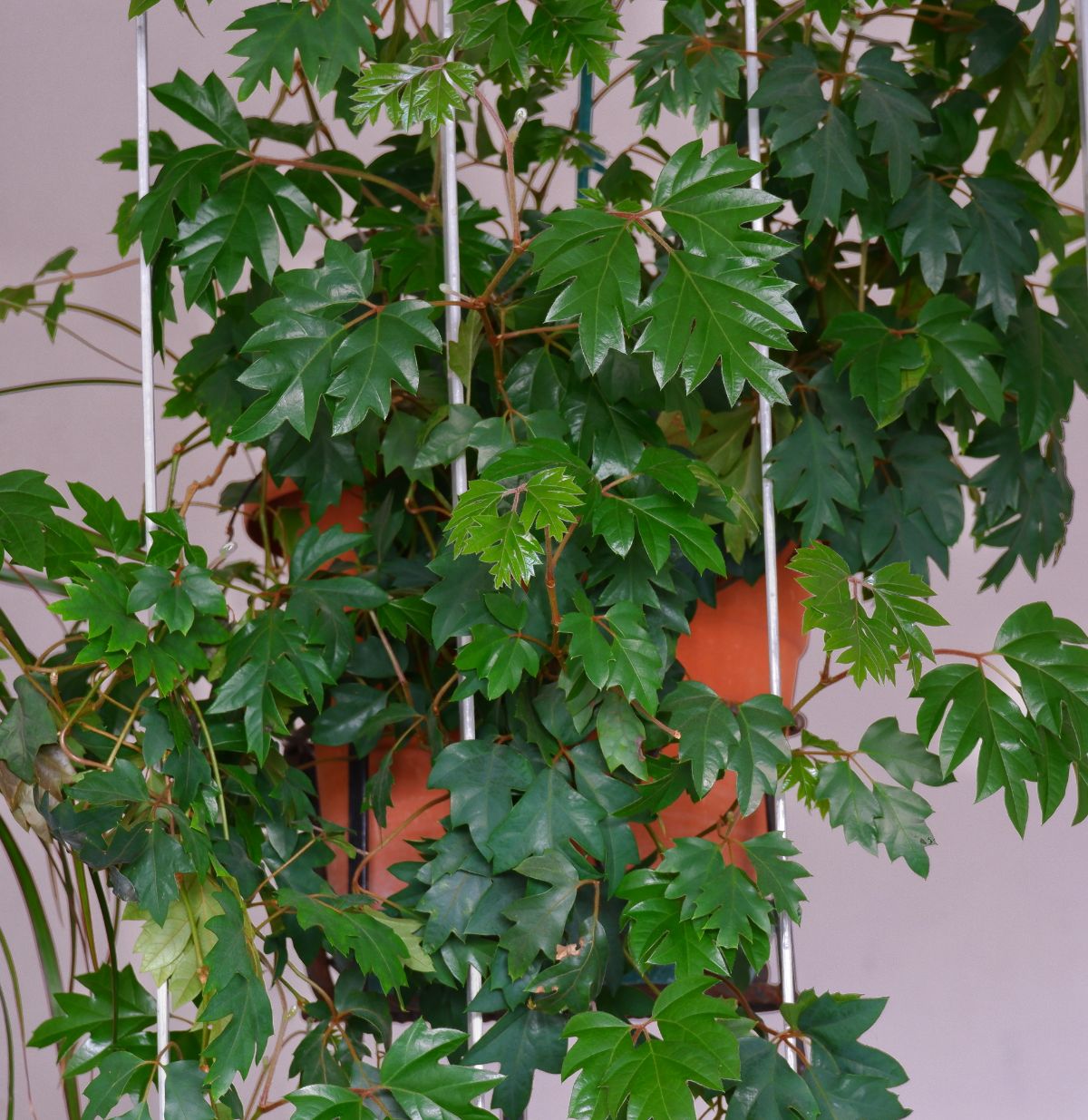
| USDA Hardiness Zone | 10-12 |
| Light Exposure | Partial shade |
| Water | Regular watering |
| Size | 6-10 ft. tall, 3-6 ft. wide |
This year-round plant grows in various tropical places around the world and can survive in various climates. Grape ivy got its name because its leaves looked like grapevines, but they do not produce grapes. This plant can live for up to 10 years with the proper care.
Grape ivy is easy to grow indoors and climb whatever support you give it. During the warmer months, it needs regular watering, but you can water it less in the winter and let the soil dry out a little.
17. Parlor Palm
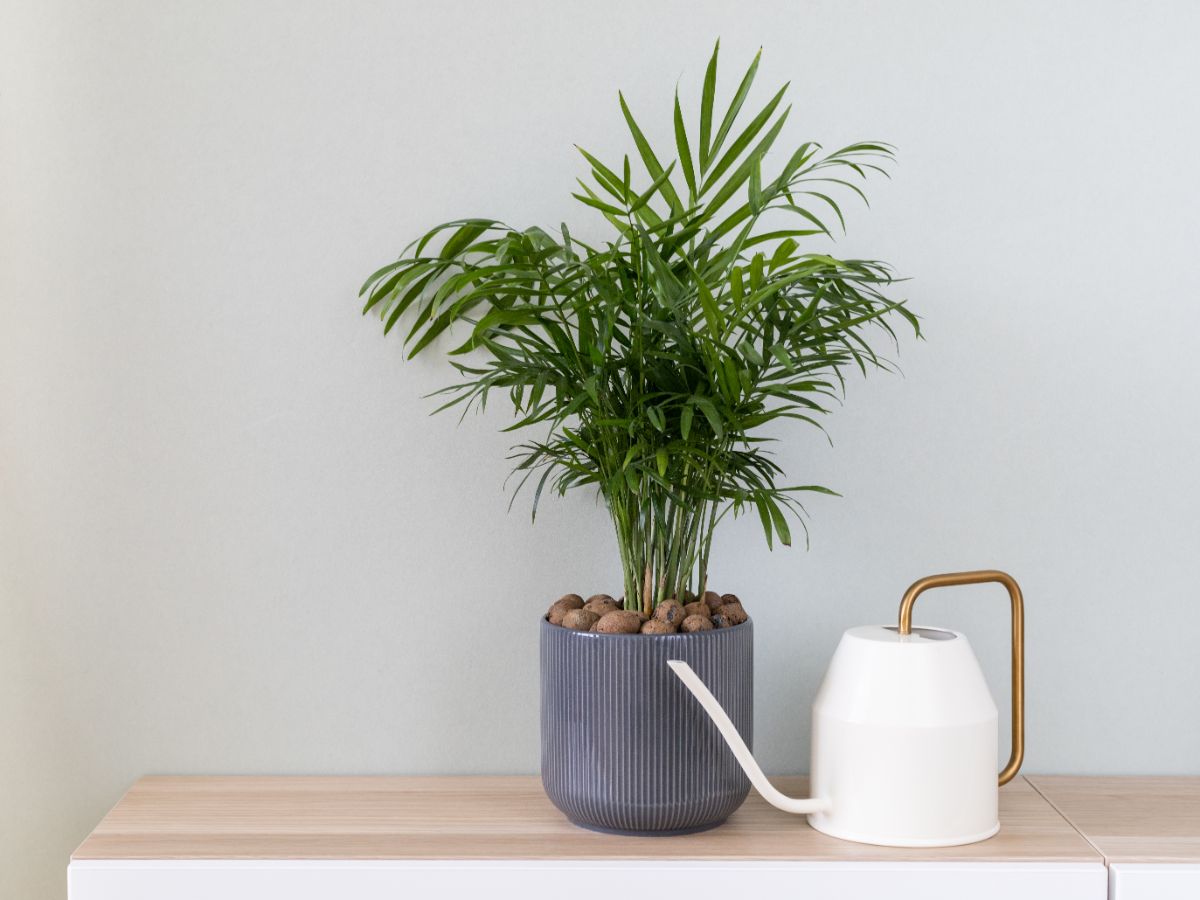
| USDA Hardiness Zone | 10-12 |
| Light Exposure | Indirect sunlight, partial shade |
| Water | Light watering |
| Size | 2-6 ft. tall, 2-3 ft. spread |
The parlor palm is native to Central America but, since its discovery, has become a popular indoor plant in the United States. It has thin trunks and feather-like leaves that grow in clumps.
Parlor palms can handle lower temperatures and low-light conditions. They also don't require too much water, making them easy to maintain. It does well in a larger pot, around 3 gallons, and will grow between 2 to 6 feet tall with about a 2 to 3-foot spread.
18. Peace Lily

| USDA Hardiness Zone | 11-12 |
| Light Exposure | Partial shade |
| Water | Moderate watering with filtered water |
| Size | 1-3 ft. tall |
Peace lilies are beautiful houseplants that brighten up spaces. They have glossy oval leaves and white flowering blooms that last for months. However, if you keep a peace lily in a low-light area, you won't see too many flowers.
The peace lily is a tropical plant, so it needs humid and temperate conditions. Keep it away from air vents or drafts and put it into a deep pot so the roots can grow comfortably. They are somewhat fickle and will wilt as soon as you forget to water them, so ensure their soil stays moist, especially during the growing season.
19. Peperomia
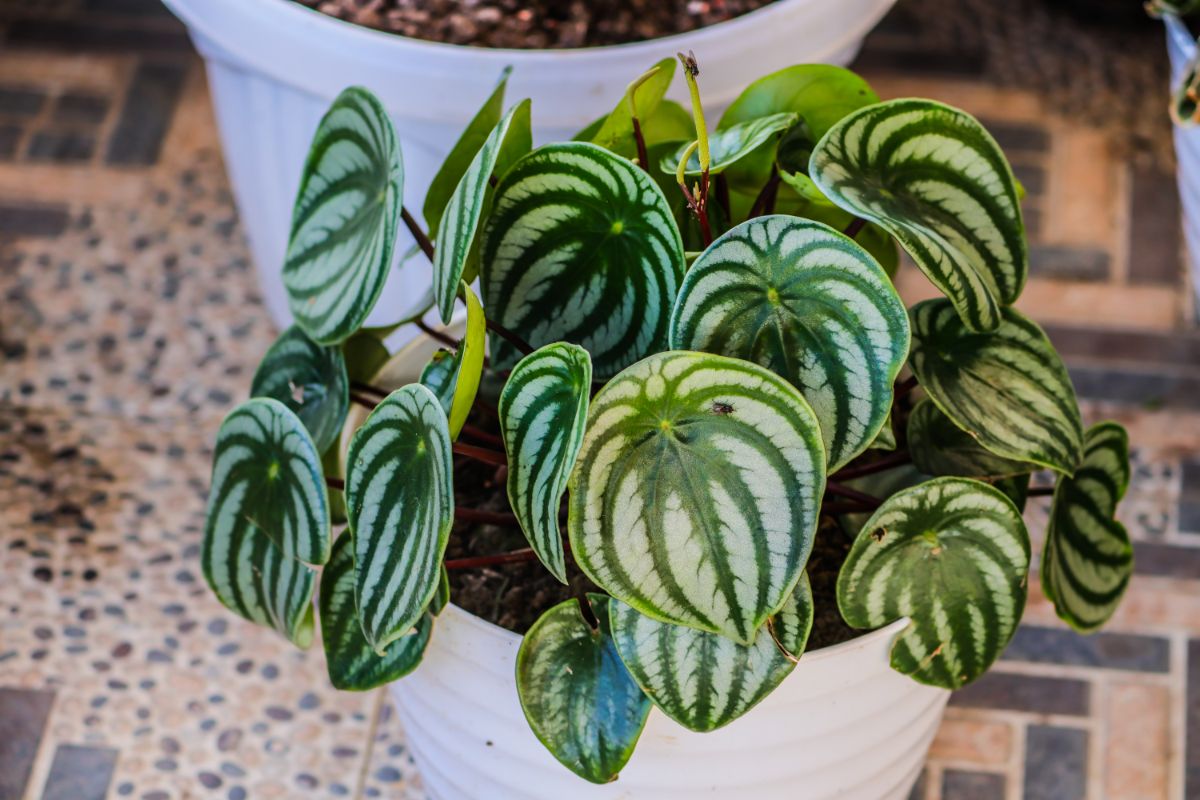
| USDA Hardiness Zone | 10-12 |
| Light Exposure | Full or partial light |
| Water | Infrequent watering |
| Size | 6-12 in. tall, 6-12 in. wide |
The peperomia is an excellent houseplant for beginners because it can survive some neglect while offering a wide variety of colors and textures in the species. The same type of plant can come in green, red, purple, or gray colors and marbled, solid, or variegated styles.
Place them in well-draining soil, and only water them when the topsoil is dry. Put the peperomia in medium to bright filtered light to keep the thick leaves looking vibrant. Mist it occasionally to increase humidity as well.
20. Philodendron
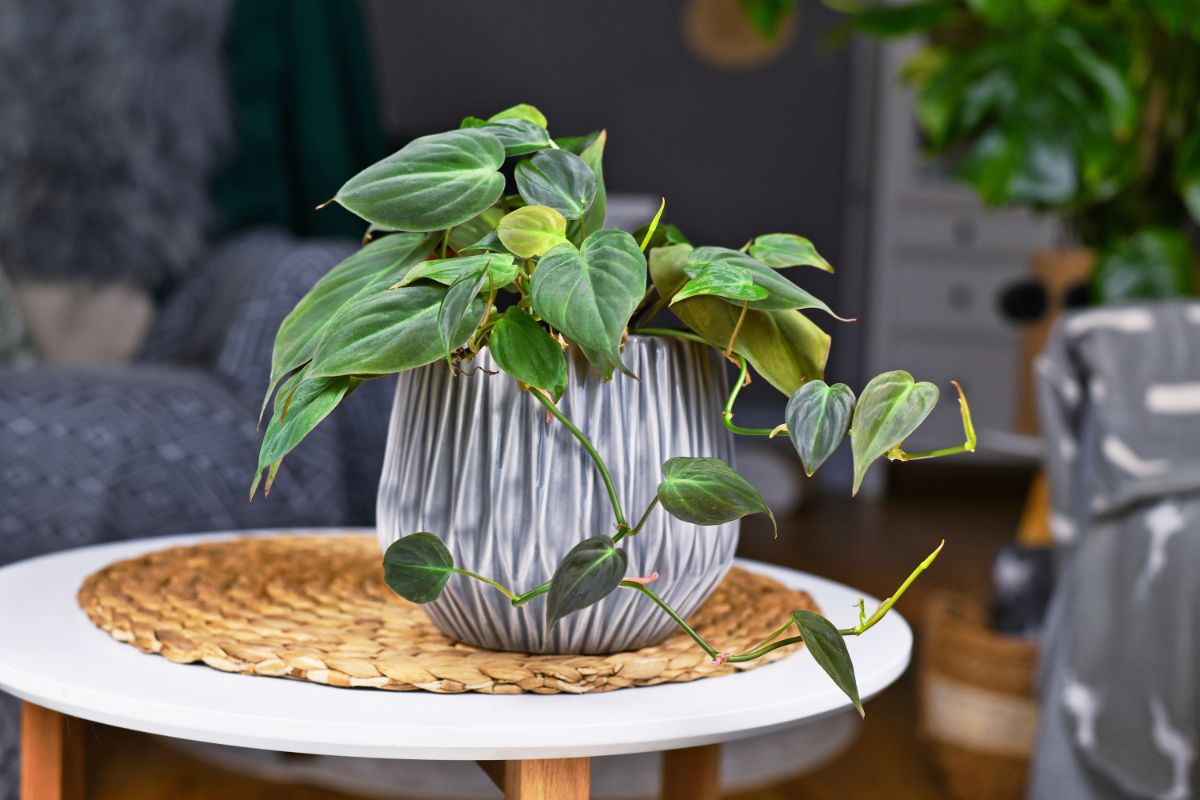
| USDA Hardiness Zone | 9-11 |
| Light Exposure | Partial light |
| Water | Moderate moisture |
| Size | 1-20 ft. tall (climbing), 1-6 ft. wide (varies) |
The philodendron plant has two varieties: the climbing and non-climbing kind. The climbing type needs some structure to climb, like a pole. Non-climbing vines grow upright in containers.
Put it near a window where it can receive filtered, indirect sunlight, and make sure it has enough moisture. Mist the philodendron occasionally to increase the humidity around the plant. Wipe the leaves with a damp cloth to keep them looking clean.
21. Pothos
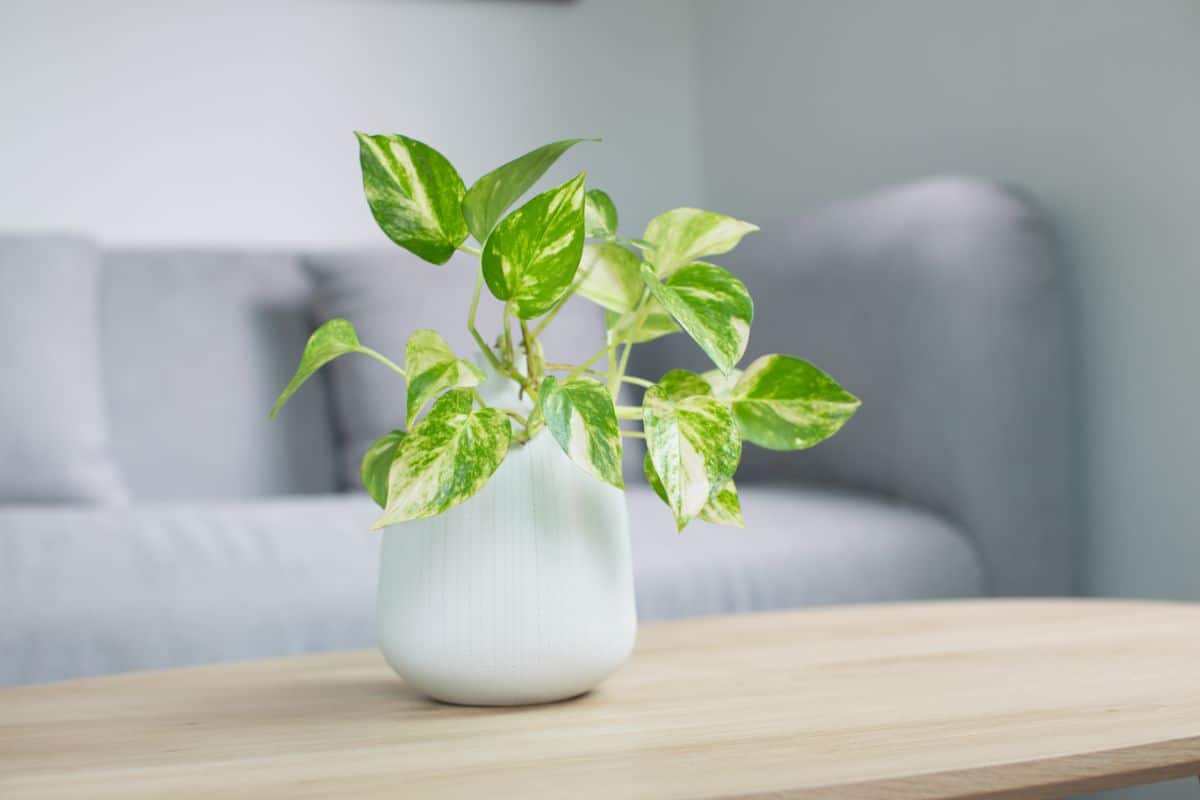
| USDA Hardiness Zone | 10-12 |
| Light Exposure | Bright, filtered light or partial |
| Water | Light watering |
| Size | 20-40 ft. long, 3-6 ft. wide |
The pothos plant looks similar to the non-climbing philodendron with its heart-shaped green leaves and trailing vines. It is one of the easiest houseplants to grow because of its low maintenance.
Pothos can survive in low light conditions and with bright, filtered light. It's the perfect plant for dorms, offices, or other spaces that may not receive as much sunlight. Let the soil of the pothos plant dry out before watering it again to avoid root rot or black spots appearing on the leaves.
22. Sago Palm
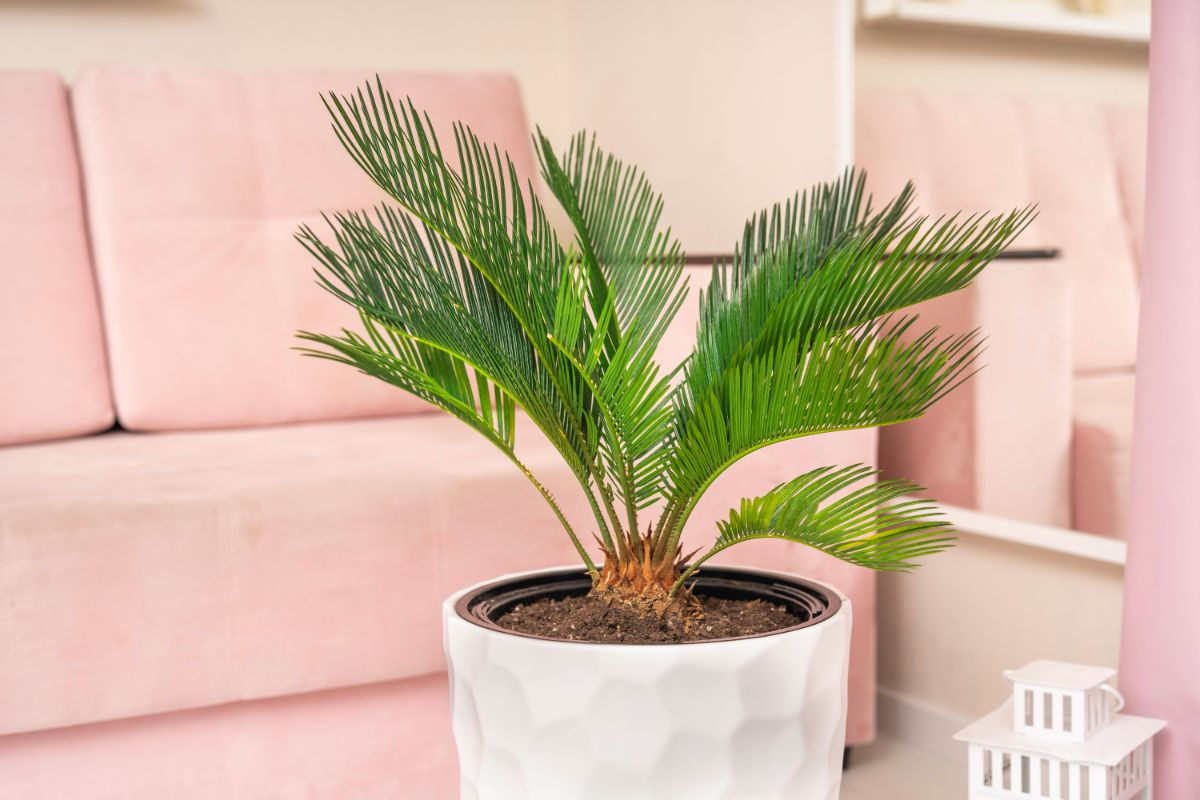
| USDA Hardiness Zone | 9-10 |
| Light Exposure | Bright, filtered light |
| Water | Moderate watering |
| Size | 3-10 ft. tall |
The sago palm is a tropical plant with long green fronds similar to a palm tree. However, its name is a misnomer as it is related to the cycads species native to southern China and Japan. It grows slowly, reaching only a couple of inches every year.
The sago palm is used to warm climates and enjoys bright environments. Place them by a window to receive filtered light and mist it with a spray bottle regularly. It needs to be in well-draining soil to avoid root rot.
23. Silver Pothos

| USDA Hardiness Zone | 10-12 |
| Light Exposure | Bright, indirect light |
| Water | Moderate watering |
| Size | 4-10 ft. long |
The silver pothos, or Scindapsus pictus, goes by several names, including satin pothos, silk pothos, and silver philodendron. Though it looks similar to a standard pothos, the silver pothos has silver variegations on its heart-shaped leaves.
It needs regular watering and indirect light, making it a great plant to keep indoors. Put your finger at least 2 inches into the soil to check if it feels dry before watering it to avoid overwatering.
24. Snake Plant
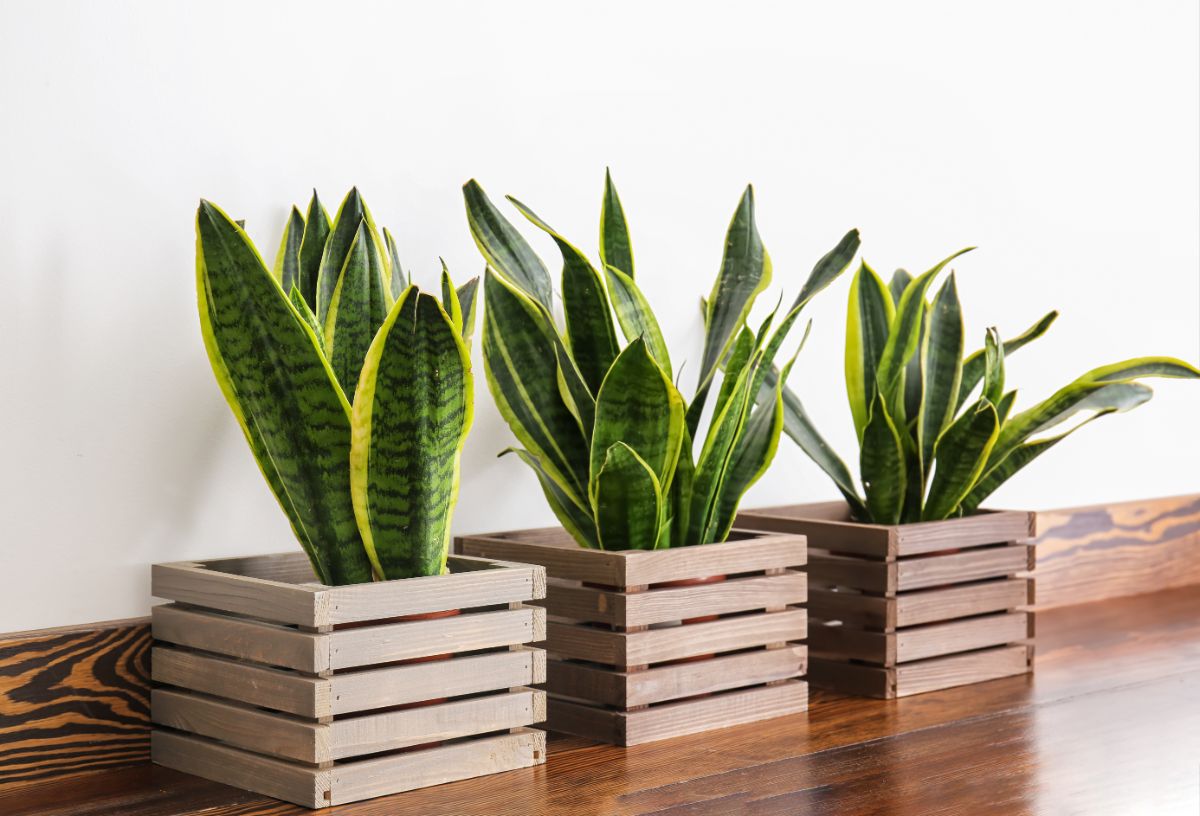
| USDA Hardiness Zone | 9-11 |
| Light Exposure | Shade to bright, filtered light |
| Water | Light watering |
| Size | 6-8 ft. tall |
The snake plant has sword-shaped leaves that make it look unique. It is a great houseplant for beginners because it is low-maintenance and thrives even with some neglect.
You can find snake plants in different colors, such as edged with gold and variations of green. It can grow up to 8 feet tall and grow slowly or quicker depending on how much light exposure it receives. It doesn't need regular watering, but let the soil dry out first.
25. Spider Plant
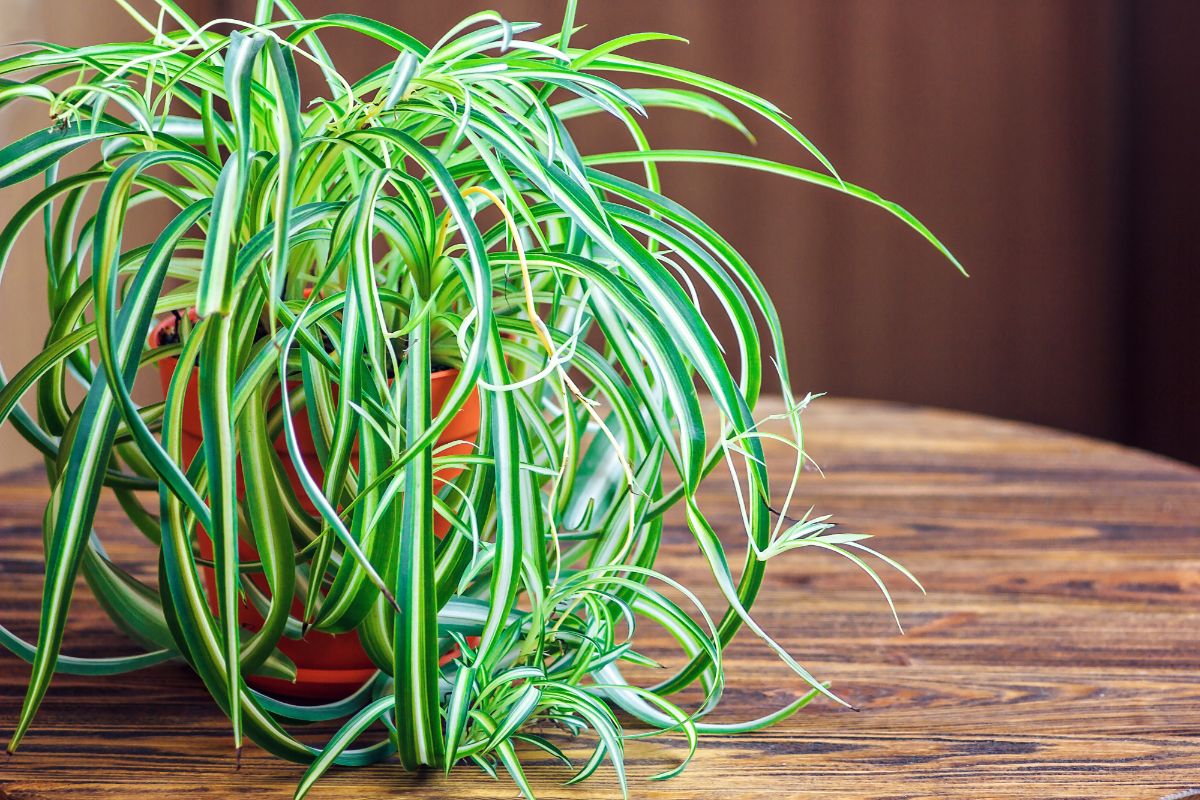
| USDA Hardiness Zone | 9-11 |
| Light Exposure | Shade, partial light |
| Water | Light watering |
| Size | 1-2 ft. tall and wide |
Another low-maintenance houseplant is the spider plant. It has long, thin leaves that sprout from a clump and arch to look like a fountain. The leaves can look green or striped with white. They grow and mature quickly, and you can see mature plants produce tiny, star-shaped flowers.
The green variation does well in low-light conditions while the variegated type does best with bright light. This perennial requires regular watering and occasional repotting to give space for its growing roots.
26. Spiderwort
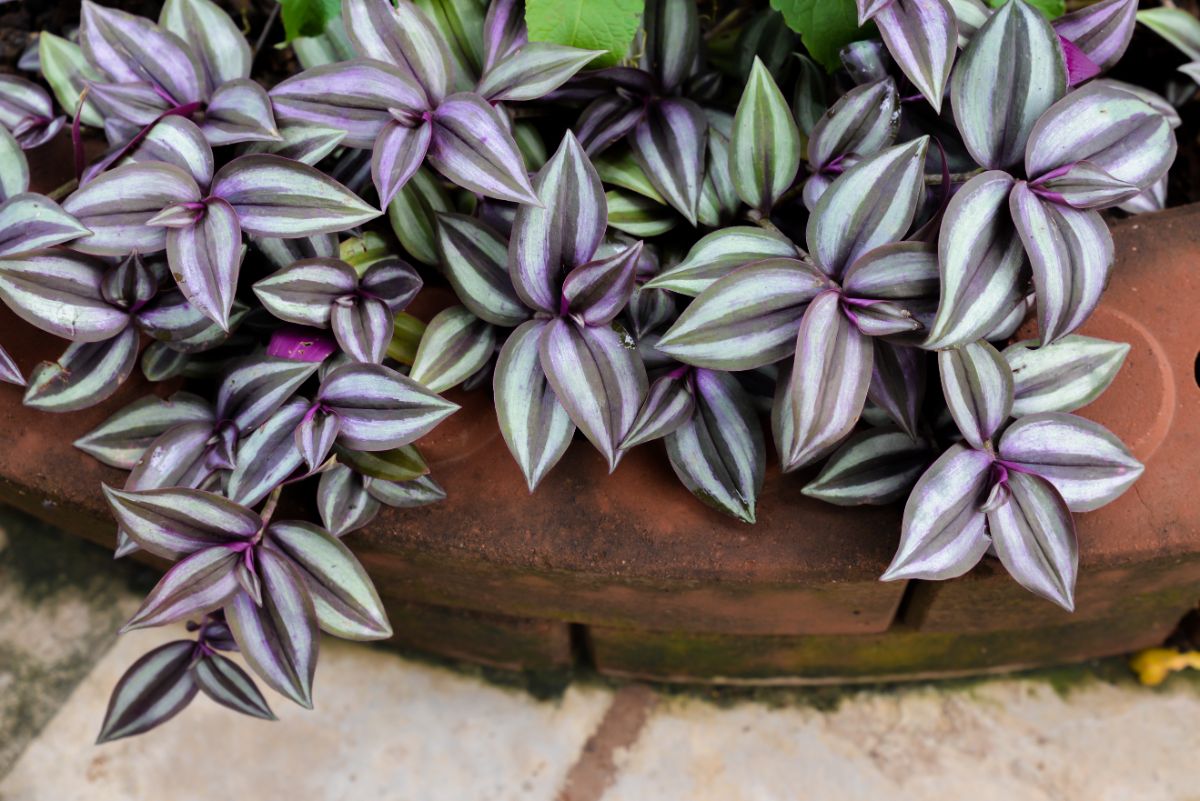
| USDA Hardiness Zone | 4b-12a |
| Light Exposure | Partial to full sun |
| Water | Moderate moisture |
| Size | N/A - climbs and spreads indefinitely |
The scientific name of spiderwort is Tradescantia zebrina, and it's also known by the nickname "wandering dude." It features unique green and silver striped leaves that are about one inch apart.
They are relatively easy to grow, but they just need consistently moist soil. However, they don't like being overwatered or soggy. You can place them in a hanging container near a window for the spiderwort to receive bright, indirect sunlight.
27. Swedish Ivy
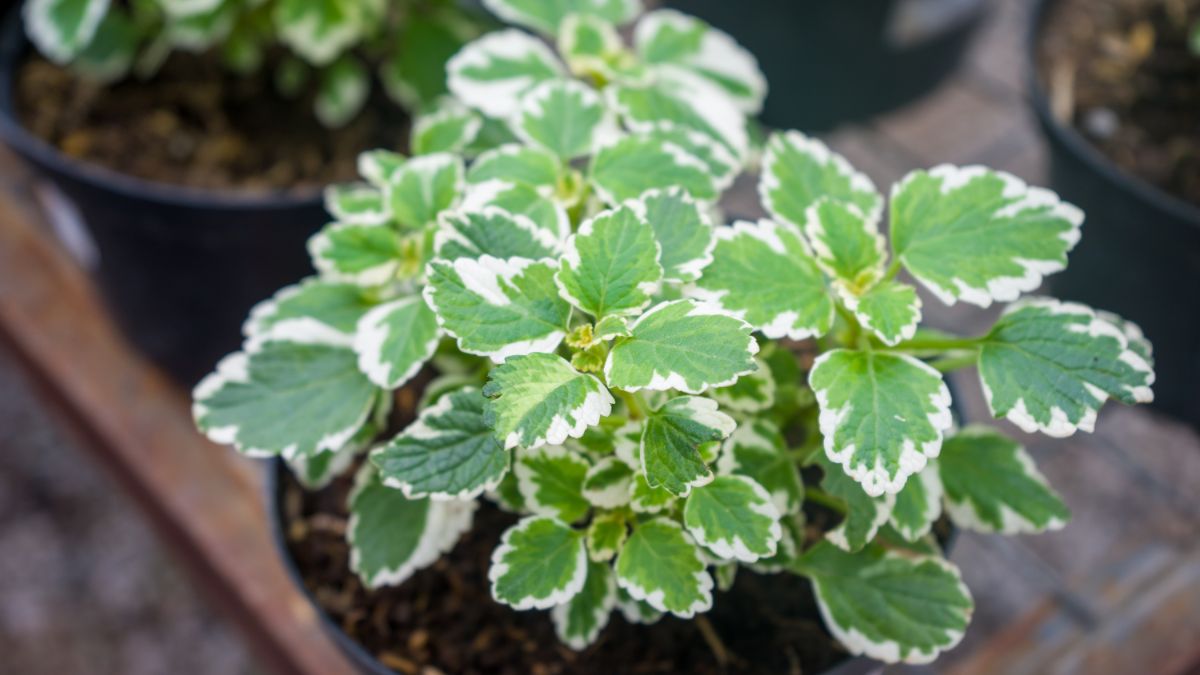
| USDA Hardiness Zone | 10-11 |
| Light Exposure | Partial or bright, filtered light |
| Water | Light watering |
| Size | 2-3 ft. tall and wide |
Swedish ivy has beautiful foliage and makes a chic accent on a tabletop. Its leaves are rounded and have scalloped edges with green or variegated designs. It can be kept compact or trail to around 2-3 feet long. Prune it regularly to keep it looking fresh and encourage its growth.
Swedish ivy looks best in a hanging basket and thrives with moderate, indirect sunlight. Its soil needs to be kept moist, but avoid overwatering it, especially during the winter.
28. Swiss Cheese Plant

| USDA Hardiness Zone | 10-11 |
| Light Exposure | Partial or bright, filtered light |
| Water | Regular moisture |
| Size | 2-3 ft. tall and wide |
The Swiss cheese plant received its name because of the holes that form in its heart-shaped leaves as it matures, resembling Swiss cheese. It grows quickly and likes to climb poles or stakes.
This tropical plant ideally needs bright, indirect light. It likes to be in well-draining soil and can grow relatively quickly even in low-light settings. Make sure to keep the soil moist and wipe the leaves occasionally to get rid of dust that may attract pests.
29. Weeping Fig Tree
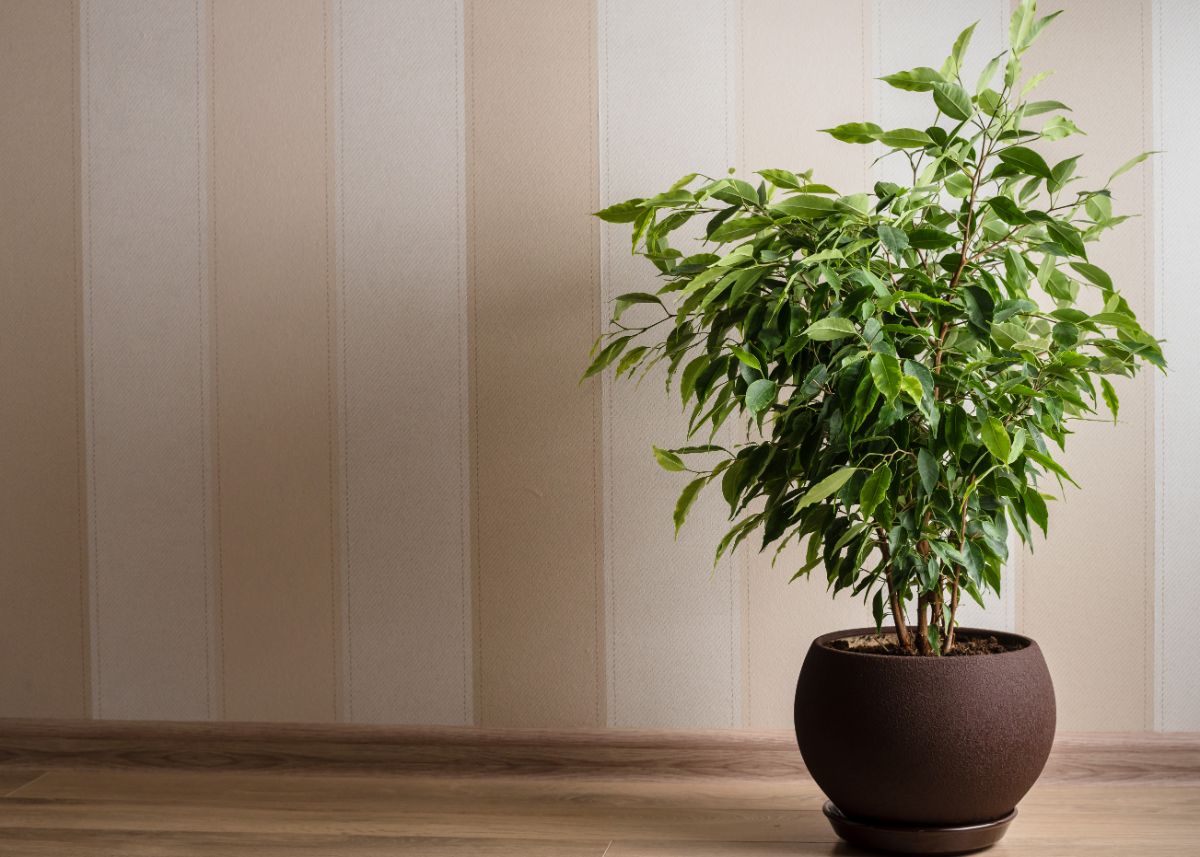
| USDA Hardiness Zone | 10-11 |
| Light Exposure | Partial or bright, filtered light |
| Water | Regular moisture |
| Size | 2-3 ft. tall and wide |
Also known as a ficus tree, the weeping fig is a tropical evergreen tree that is a popular houseplant in homes and offices. Its thin branches hold dark, glossy leaves that grow closely together. It grows quickly and needs to be repotted at least once a year.
You can grow the weeping fig in partial shade, but make sure it receives some indirect sunlight during the day. It needs to stay relatively moist, but avoid overwatering it lest its leaves start to fall.
30. ZZ Plant
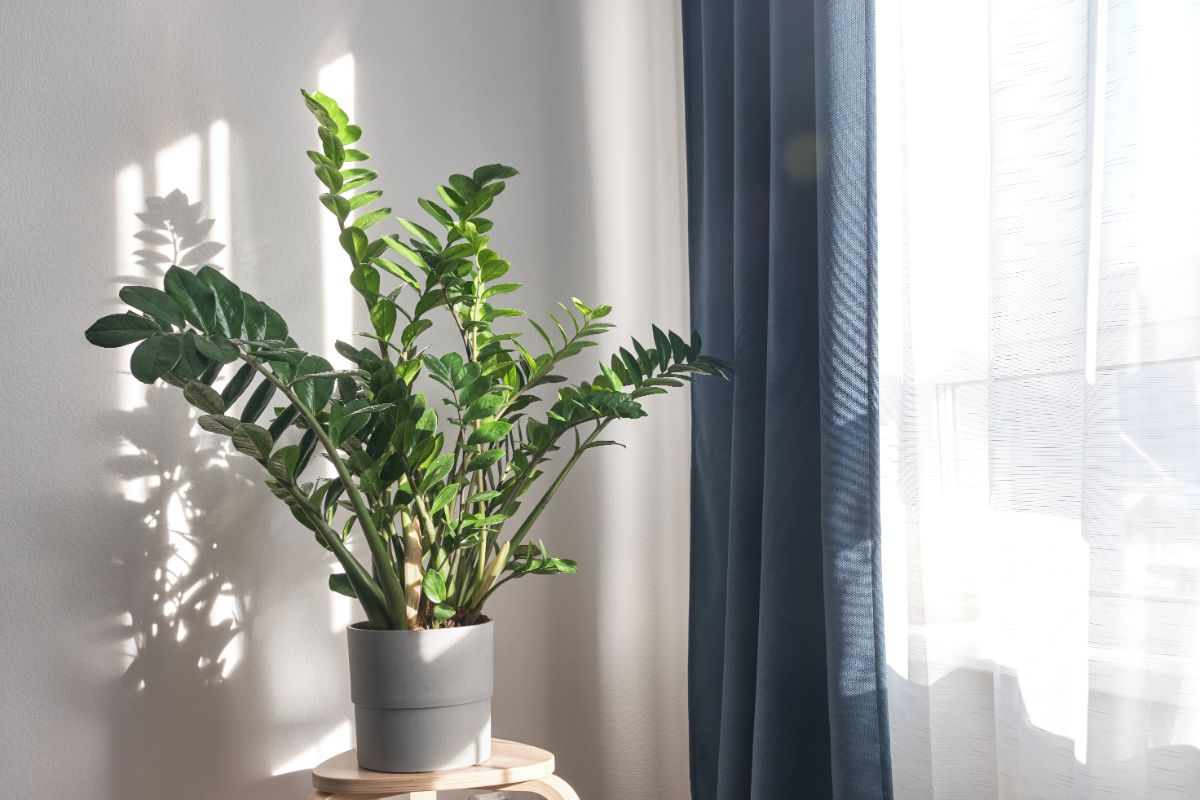
| USDA Hardiness Zone | 9-10 |
| Light Exposure | Partial shade, indirect light |
| Water | Infrequent watering |
| Size | 3-4 ft. tall |
ZZ plants are also called Zanzibar gems because of their deep green and shiny leaves. It's a tropical plant native to Eastern Africa and it only grows actively during the spring and summer.
ZZ plants are great houseplants because they are easy to care for and will survive even with minimal care. They just need to be watered every two weeks or when the soil dries out completely. Make sure to wipe the leaves occasionally to keep them looking bright and glossy with a damp cloth.
Final Thoughts
Many of the houseplants that thrive in low-light tend to be tropical and need warm and humid conditions. If you're a new plant owner or tend to forget to water or care for your houseplants, look into growing a hardier variety that can survive some neglect, like the peperomia or the ZZ plant.

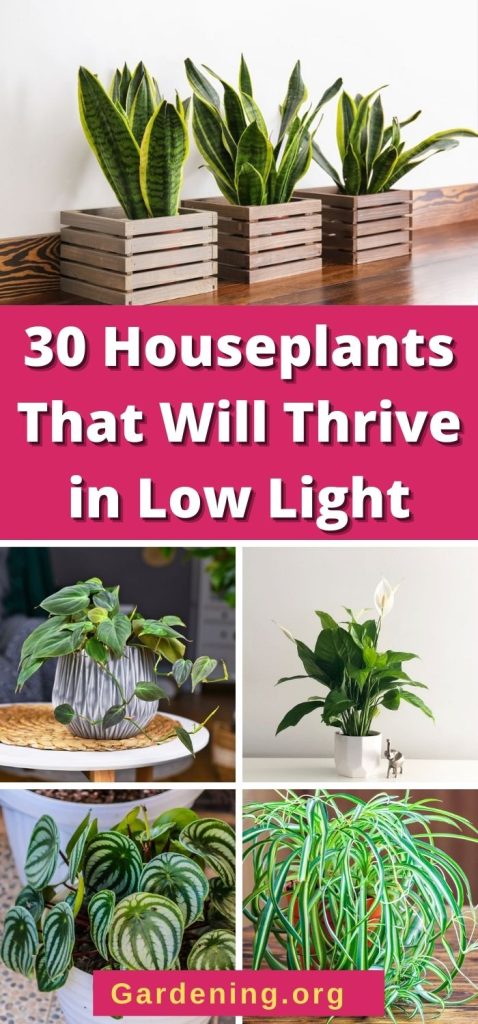

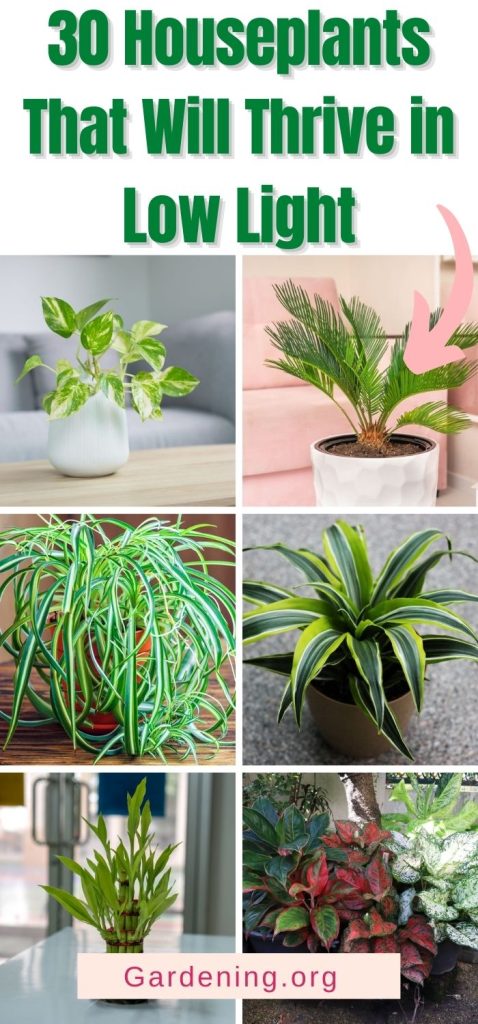
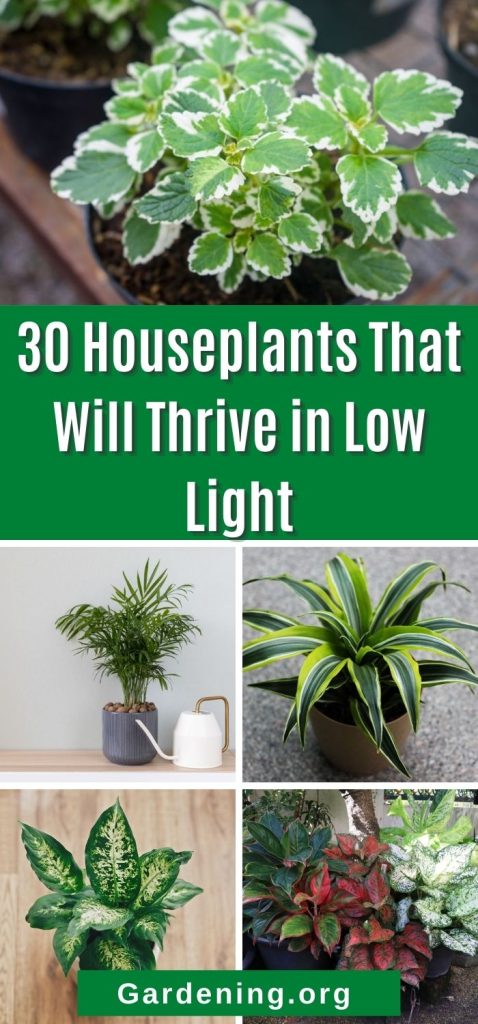
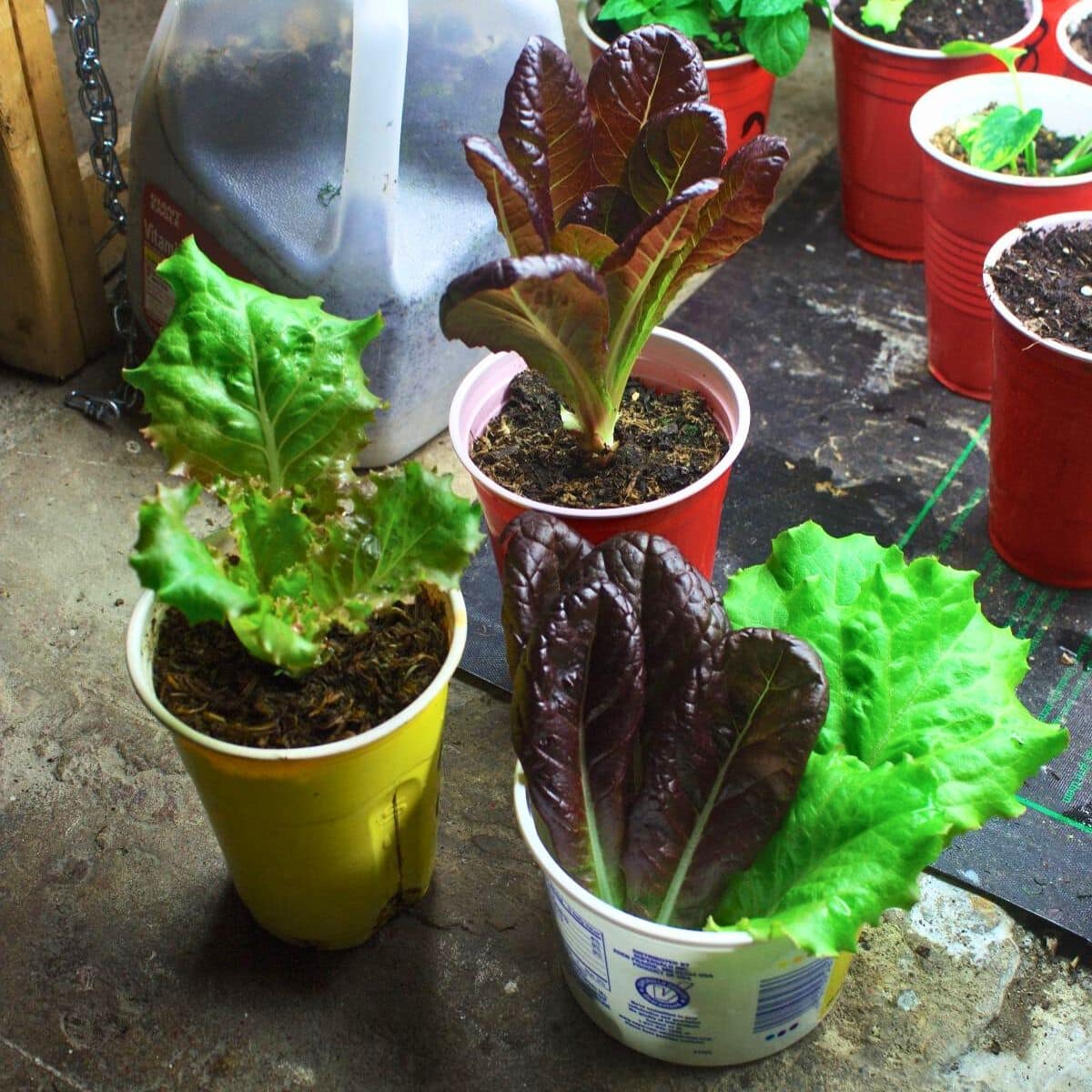
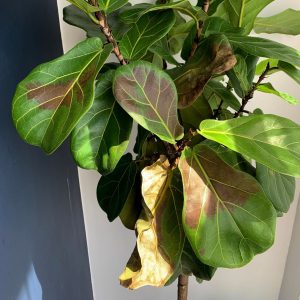


Leave a Reply